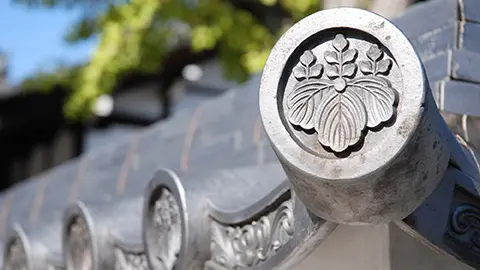VOL.194 JULY 2024
JAPANESE SMALL AND MEDIUM ENTERPRISES LEADING THE WORLD
[The Beauty of Japanese Swords] Long sword signed Sanjou (celebrated Mikazuki Munechika)

The sword’s maker, Munechika, was a well-known swordsmith thought to have lived in Kyoto’s Sanjo district. He used two different inscriptions: “Munechika” and “Sanjo.” The Mikazuki Munechika is inscribed “Sanjo.” (Dimensions: approx. 80-cm blade length with approx. 2.7-cm curve)
Photo: ColBase
The celebrated Mikazuki Munechika long sword (tachi) signed “Sanjo,” a National Treasure, is thought to have been crafted between the 10th and 12th centuries. Its maker, Munechika, was a famous swordsmith known as Sanjo Munechika, as a Muromachi-period (1392-1573) work listing swords and swordsmiths describes him as a resident of the Sanjo district of Kyoto around the beginning of Emperor Ichijo’s reign (986–1011 as the 66th emperor of Japan). He used two different inscriptions: “Munechika” and “Sanjo.”
This blade is representative of those with the Sanjo signature and was regarded as one of the “Five Famous Swords of Japan” (Japanese: tenka goken) during the Muromachi period. Its distinctive form bespeaks the old style of Japanese sword making: a strong curvature from the tang through the lower half of the blade (koshi), but almost no curvature in the upper half (saki). The crescent-moon-shaped pattern (mikazuki) of the tempering gives the work its name, “Crescent-Moon Munechika” (Mikazuki Munechika).*
The sword was left to Kodai-in — the primary wife of Toyotomi Hideyoshi, the Sengoku military commander who united all of Japan — and next to Tokugawa Hidetada (Reign of Shogun: 1605-1623), the second shogun of the Edo shogunate, after which it was passed down through the Tokugawa shogun family. Today, it is in the Tokyo National Museum’s collection.

The Mikazuki Munechika features a particularly minute and complex hamon temper pattern. The pattern, consisting of several white lines curved like a crescent moon (mikazuki), gives the sword its name.
Photo: ColBase
* Quoted from the explanatory text on the e-Museum website (from “This blade is” to “(Mikazuki Munechika.)”
<Reference: Terms used in this text>
- Muromachi period: In this article, the Muromachi period is defined as from 1392 (the year when the Northern and Southern Courts were united) onwards. Generally considered to refer to the roughly 240-year period from 1336 to 1573 when the Ashikaga clan had a shogunate established in Kyoto, although various interpretations exist.
- Tenka goken: Five specific swords considered to be the greatest masterpieces among all the many Japanese swords ever crafted
- Nakago (tang): The portion of a sword blade that fits into the handle (tsuka)
- Hamon (temper patterns): White, wave-like patterns applied to Japanese sword blades during tempering or hardening (yaki-ire), a stage in the sword-making process in which the sword steel is rapidly cooled from a high-temperature state to increase its hardness. The patterns appear in a variety of different forms depending on the era or school of sword-making. They are one of the highlights of Japanese swords’ features that reveal swordsmiths’ individual characters.
